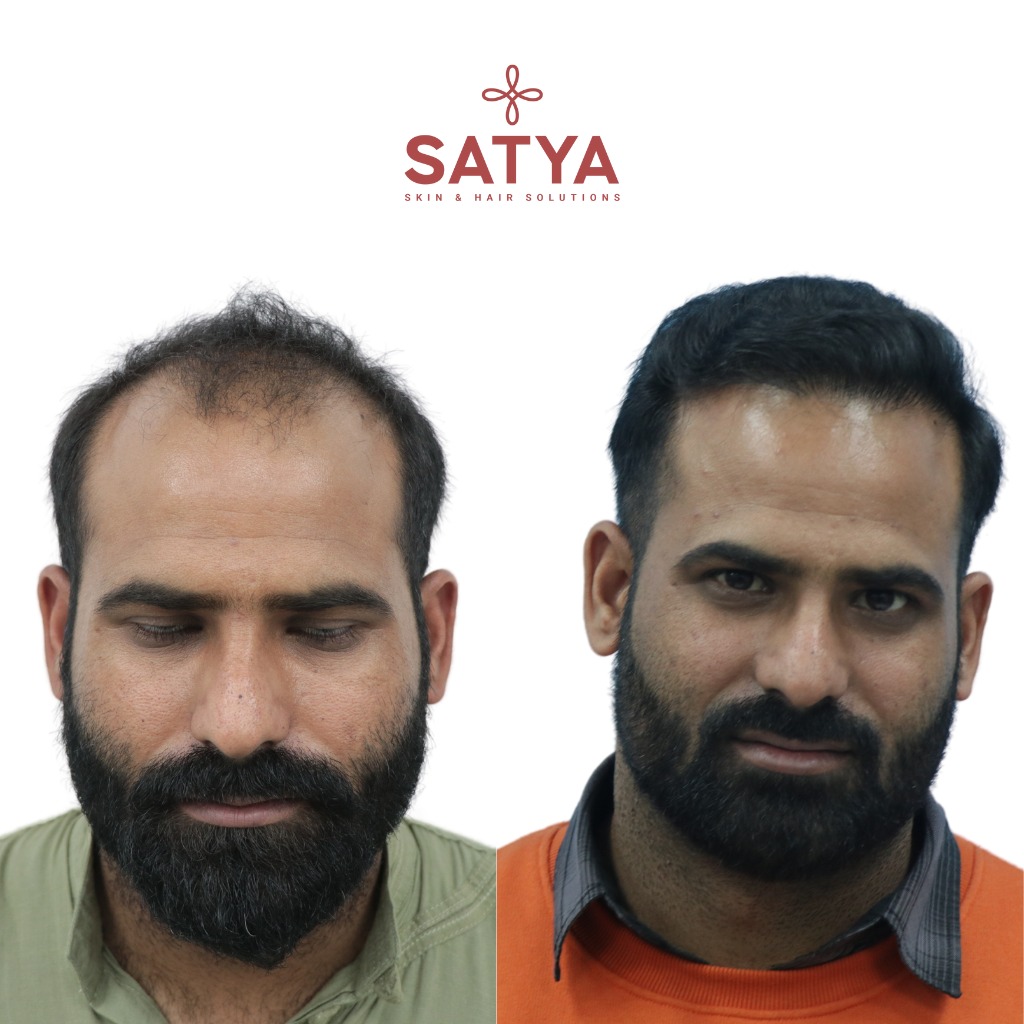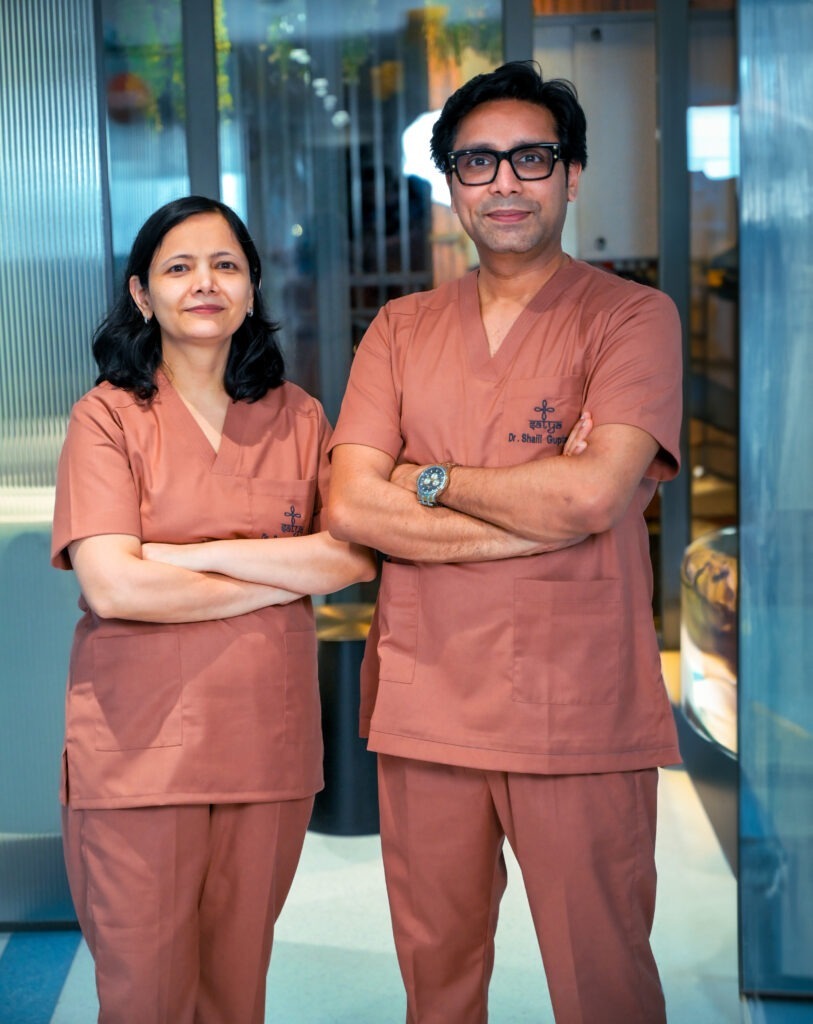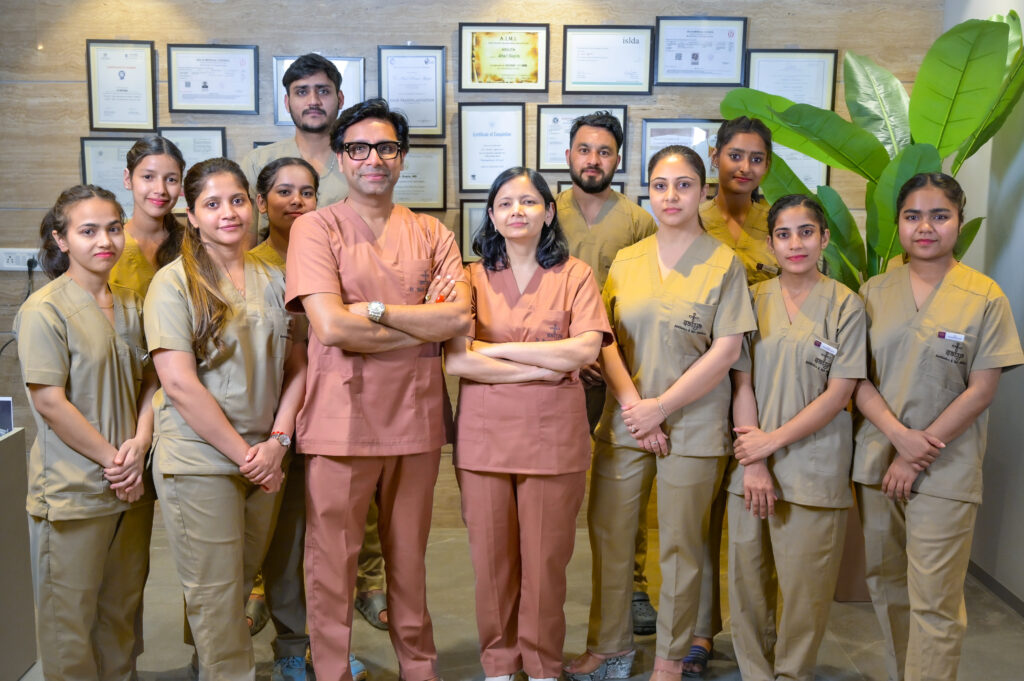
Complete Guide to Hair Transplant Repair at Satya Skin and Hair Solutions
Hair loss can be painful, and while hair relief may feel promising, not all styles can achieve the desired results. However, structure preferences are reachable to assist you in achieving what you want If you have had problems with hair transplants in history. At Satya Skin and Hair Solutions Results in Gurgaon and Pitampura, we specialize in endless hair loss and hair restoration surgery. Then’s everything you need to know about hair transplants, inclusive of the three styles, common procedures, and continuously requested questions.
What is Hair Transplant Repair?
Hair transplant form, additionally recognized as corrective hair transplant, is a surgical system to correct issues from a former hair transplant. Problems can occur due to colorful factors such as outdated ways, inexperienced surgeons, or poor patron hair operation. Our platoon at Satya Skin and Hair Results uses advanced styles to address these issues and give a fantastic outgrowth.

Reasons for a Bad Hair Transplant
- Poor Planning and Design: Successful hair transplants require careful planning of hair growth, density, and hairline patterns. Inadequate planning can lead to unsatisfactory results, necessitating a repair hair transplant in Gurugram and Delhi NCR.
- Outdated Techniques: Some clinics use older strategies that end result in visible scars or uneven hair growth. At Satya Skin and Hair Solutions, we use the latest techniques to ensure natural-looking results.
- Inexperienced Surgeons: An inexperienced surgeon might also implant hair follicles incorrectly, leading to unsatisfactory results. Our skilled team is well-versed in superior techniques to correct such errors.
- Inadequate Donor Hair Management: Poor management of donor hair can result in an unnatural hairline or insufficient hair for future transplants. We carefully manage donor hair to ensure optimal results.
Meet with our board certified doctors to diagnose your hair loss and discuss treatments. Schedule A Physician Consult
Explore our insightful blogs on hair loss transplant today! Read Blogs

Results that inspire and Transform photos of our
patients. Explore Galleries
WHEN DO YOU NEED A REPAIR HAIR TREATMENT IN GURUGRAM AND DELHI NCR?
Several things could drive you toward a repeat hair transplant:
- when the uneven and unnatural hairline appears.
- When your hair’s density and volume fall short of what you want.
- When surgical scarring of the donor region occurs.
- After several months following surgery, your natural and transplanted hairs fall off.
- Your baldness advances and you start to lose already present hairs.
Common Hair Transplant Form Procedures
- Hairline Repair: This procedure addresses inadequately positioned follicles or an incorrect hairline design, aiming to restore a natural and aesthetically pleasing captivating hairline.
- Scar modification: We use a technical approach to minimize the look of scars from former transplants, making them much less conspicuous.
- Density Improvements: For cases where density is inadequate, we operate clean transplants to enhance hair viscosity and attain fuller content.
WHY DOES A HAIR TRANSPLANT SURGERY FAIL?
One should know why one does not get the expected outcomes even following the hair surgery. The failing success of surgery for hair restoration can have several causes. Some often occurring elements or causes are:
- Inexperienced hair surgeon: The lack of surgical knowledge of operating surgeons in terms of experience with several surgical and nonsurgical ways of hair restoration makes inexperienced hair surgeons less competent.
- Careless attitude towards post-op care: It is imperative to take good care following the hair transplant to preserve the long-term effects.
- Lack of artistic imagination: Making a correct outline or imagination of the ultimate hairline is the most important stage in any hair transplant operation. Placed at odd angles, grafts could look strange
- Blanket therapy with Finasteride: Finasteride-based blanket treatment Your post-operative apparent hair growth may be entirely dependent on Finasteride.
- Unrealistic expectations: An aesthetically pleasing low hairline could lead you to have unreasonable long-term aspirations. It can also deprive you of all your donor reserves.
PROCEDURE INVOLVES IN REPAIR HAIR TRANSPLANTATION
A repair hair transplant in Delhi NCR and Gurugram operation should be carried out using a multimodal strategy and comprises several stages. Among the operations carried out in repair transplant are:
- Removal of Grafts:
New grafts are positioned at the proper angles, right orientation, and at the correct location while the poorly positioned grafts from the prior surgery need to be removed. A once-too-low hairline is changed to reach a suitable level where the patient can maintain it. Slits close in a tidy and ordered manner.
- Camouflage:
New grafts are taken from the front and top of the scalp and placed to cover the bald area. When the donor reserve is almost depleted, fresh grafts are placed in some situations using SMP (Scalp micropigmentation) to achieve this camouflaging.
Results
Why Choose Satya?
20+ Years of Expertise – Renowned in dermatology and hair restoration with a legacy of excellence.
Globally Accredited – Affiliated with the American Academy of Aesthetic Medicine.
Tailored Treatments – Personalized care crafted to suit your unique needs.
World-Class Facilities – State-of-the-art laser and surgical technology. –
Specialists in Corrective Treatments – Experts in resolving unsatisfactory results from other clinics.
265,000+ Satisfied Patients – Trusted worldwide for successful outcomes and client satisfaction.
Comprehensive Care – From skin lasers to advanced hair restoration under one roof.
Ethical & Patient-Centric – Transparency and patient well-being are our priorities.
What Our Patients Are Saying






Frequently Asked Questions
Yes, hair transplants are successful in females, especially for treating conditions like female pattern baldness, receding hairlines, or thinning hair. At Satya Skin and Hair Solutions, we specialize in personalized hair transplant techniques, ensuring natural and lasting results for women.
The cost of a hair transplant for women typically ranges from ₹80,000 to ₹3,50,000 in India, depending on the number of grafts and the clinic’s expertise. At Satya Skin and Hair Solutions, we provide tailored treatment plans and transparent pricing for female hair transplants.
A female hair transplant is a permanent solution. Once the transplanted hair follicles take root, they will continue to grow naturally for a lifetime. Results are usually noticeable within 6-12 months post-surgery.
Yes, ₹2 lakh is generally enough for a hair transplant in India, depending on the number of grafts required. Most clinics offer pricing that ranges between ₹50,000 and ₹3,50,000 for a typical procedure. Satya Skin and Hair Solutions provide competitive pricing and excellent results within this budget.
The cost of 2000 hair grafts typically ranges from ₹1,00,000 to ₹4,00,000 in India, depending on the clinic and technique used. At Satya Skin and Hair Solutions, we offer affordable options without compromising quality.
In Delhi, hair transplant costs range from ₹80,000 to ₹4,00,000 depending on the clinic, surgeon’s expertise, and the number of grafts. At Satya Skin and Hair Solutions, we offer customized pricing based on your specific needs.
Yes, hair transplants can be very effective for females experiencing hair thinning, pattern baldness, or scarring alopecia. Clinics like Satya Skin and Hair Solutions offer specialized techniques to ensure natural-looking results for women.
A 5000 graft hair transplant can cost anywhere from ₹2,50,000 to ₹10,00,000 in India, depending on the clinic and procedure complexity. Satya Skin and Hair Solutions offer competitive pricing and high-quality care for large-graft hair transplants.
A failed hair transplant can be corrected through colorful procedures, including hairline form, scar modification, and viscosity enhancement. Consult with a specialist to determine the stylish approach for your situation.
If your hair transplant has resulted in visible errors or unsatisfactory results, seek a consultation with a repair specialist to explore corrective options.
Yes, a failed or wrong hair transplant can be repaired using advanced ways to address issues such as poor hairline design, scarring, and viscosity problems.
Fixing a failed hair transplant involves assessing the former procedure, creating a customized form plan, and using advanced ways to correct the issues and achieve a natural look.
Signs that you may need a repair include an unnatural hairline, visible scars, uneven density, or dissatisfaction with the overall aesthetic results of your previous transplant.
The duration of the procedure varies based on the complexity of the repair and the techniques used, but it typically ranges from 4 to 8 hours.
Most patients can resume light activities within a few days, but we recommend avoiding strenuous exercise and heavy lifting for about two weeks to ensure proper healing.
Initial healing usually occurs within a week, but full results may take several months as the new hair follicles establish themselves and begin to grow.
Yes, the results of a successful hair transplant repair are generally permanent, as long as you follow post-procedure care instructions and maintain a healthy lifestyle.
Our skilled surgeons focus on creating a natural appearance by considering the direction, angle, and density of hair implantation. We strive for results that blend seamlessly with your existing hair.
When hair transplant repair is done by qualified experts applying contemporary procedures, the success rate is really high. The patient’s particular situation and the complexity of the problems being solved determine success.
Yes, re-distributing grafts for a more natural look or scalp micro-pigmentation can help over-harvested donor areas look better.
Yes, badly positioned grafts can be taken out or adjusted during a repair operation to enhance the general look and produce a more natural appearance.
Yes, to improve hair density and get a fuller appearance, restoration treatments sometimes call for introducing fresh grafts to places with limited covering.
Examining the surgeon’s experience, their methods, your general health, donor hair availability, and your intended result is crucial.
While normal transplants seek to address initial hair loss, corrective hair transplants concentrate on repairing problems resulting from past transplants such as improper graft placement, low density, or scarring.
Great donor hair management is absolutely vital. Surgeons carefully remove and arrange grafts to maximize results during repairs, thereby conserving as much donor hair as they can for possible future use.
Corrective treatments can indeed redesign and improve an abnormal hairline by orienting grafts at the right angle and density to provide a more natural appearance.
For those with limited donor hair, synthetic hair implants are a choice; yet, they need regular replacements and appropriate care.
Following post-operative care guidelines, selecting a qualified and experienced surgeon for your first operation, and keeping a healthy lifestyle will help avoid difficulties down the road.
Scars can be covered with scalp micropigmentation; thinning regions will seem better; and the visual density of the hair will be increased.
Yes, existing grafts, scars, and limited donor hair make repair operations usually more difficult and need a great degree of knowledge.
Usually utilized to guarantee the process is painless and to keep the patient comfortable is a local anesthetic.
Yes, incorrectly placed grafts can be changed or eliminated during a restoration operation to produce a more natural look.
Carefully follow the post-operative advice of your surgeon, including avoiding excessive exercise, shielding the scalp from sunlight, and following any medication recommendations.
Take Our Quick
Hair Loss Quiz
Find out the best treatment for your
hair loss today







